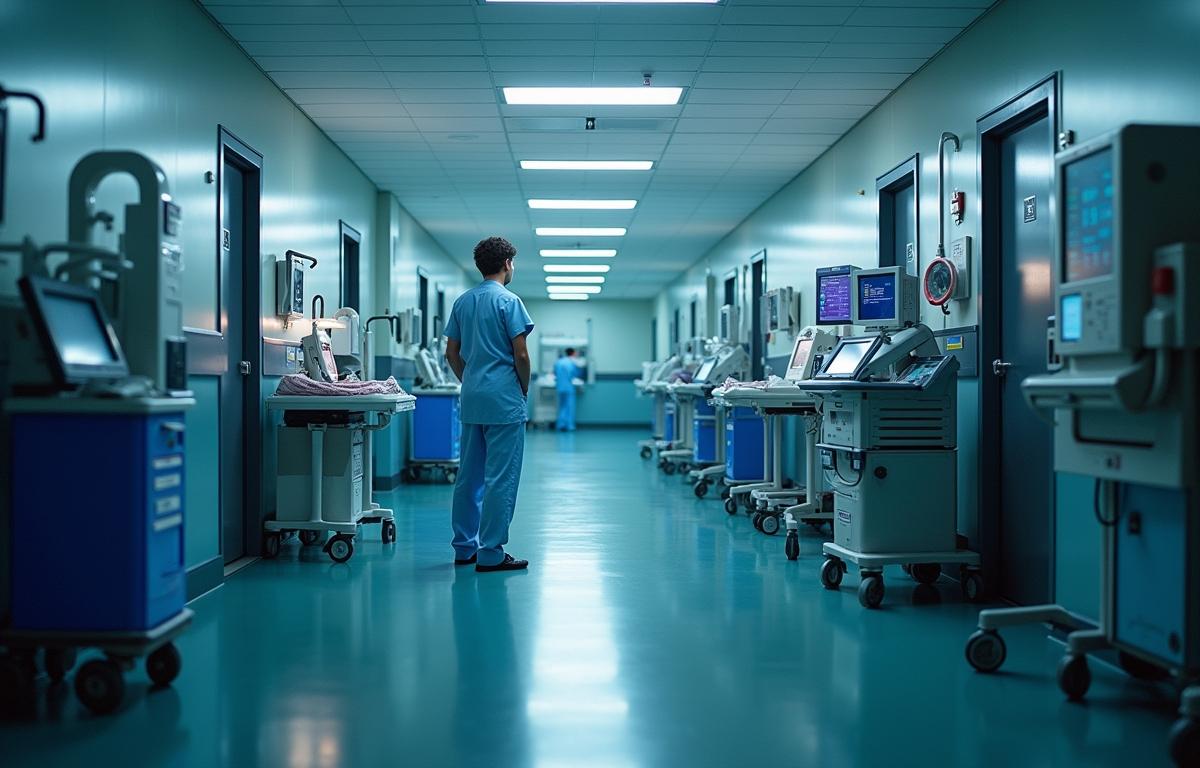
How Hospitals Manage Life-Saving Equipment During Power Failures
When power outages occur, hospitals carefully manage life-saving equipment to ensure safety. Inside operating rooms, labs, and ordinary patient wards, the flow of electricity can mean the difference between a swift recovery or a critical situation. While backup power systems are typically in place, these solutions require careful oversight and planning. Everything from respirators to electronic medical records must run smoothly when the lights go off, and that means meticulous coordination among technical teams, administrative staff, and clinicians.
No hospital wants a moment where life-support systems flicker or fail, even for a second. Yet, power grids can be unpredictable due to storms, infrastructure failures, or regional weather patterns. In these moments, redundant power sources and emergency strategies become the backbone of patient safety. Having multiple layers to handle electric load distribution and keep essential devices online can be just as important as any clinical treatment.
Why Reliable Power Supply Matters for Medical Devices
When a hospital invests in uninterrupted power supply solutions, it isn’t just preparing for a one-time event. It’s building a long-term shield to protect valuable diagnostic tools, medication pumps, and emergency communication systems. If the electricity shuts down during a delicate procedure, crucial seconds can mean all the difference to caregivers and patients alike.
Protecting critical medical devices demands both hardware and planning. Power generators have to be up to the task, and fuel supplies must be readily available to keep machinery humming. Nurses, doctors, and technicians also need quick access to equipment that can’t skip a beat, whether it’s a ventilator in the ICU or a medication dispenser in a busy ward.
Critical Role of Backup Systems
Backup systems step in as a lifeline, bridging the gap between full power outages and normal operation. When the primary source flickers off, the backup infrastructure pivots on instantly, reducing risk and guaranteeing time-sensitive procedures can continue.
Spare generators, battery banks, and even renewable energy setups all play a part. Certain facilities opt for layered solutions where large generators supply entire wings and smaller battery packs give added support to individual units. These layers keep vital machinery safe and ready, particularly in specialized areas like operating theaters and neonatal intensive care units.
Strategic Placement of Redundant Power Sources
Hospitals don’t just install a single backup generator and hope for the best. They organize these standby systems in strategic locations so that each department has the resources it needs. For instance, a lab that depends on refrigerated storage for lab samples might have its own capacity to maintain temperature-sensitive items.
Spreading out backup capacity also prevents a single failure from compromising the entire building. With careful electrical design and distribution, power sources can be isolated if a problem arises. That means if the main system fails in one section, a separate substation can handle another part of the hospital.
Maintenance and Testing Routines
Having a top-tier generator or battery bank is only half the story. Regular testing ensures everything starts up smoothly during an actual crisis. Hospital teams schedule these drills on evenings or weekends to minimize disruption, while still giving staff a realistic sense of what it feels like when emergency power sources kick in.
Fuel management stands at the core of dependable backup. Generators often run on diesel or natural gas, which must be stored safely and checked for quality. Technicians keep close tabs on fuel levels and run practice sessions to confirm that everything transitions seamlessly from the main grid to the backup system.
Collaborating with Technical Experts
Facility managers often consult with design engineers on best practices for generator placement, insulation, and ventilation. An overcrowded basement might seem like an easy place to stick a generator, but it could pose operational risks if it becomes flooded. Technical experts advise on safe, accessible locations and the right gear to maintain stable temperatures.
Likewise, electrical engineers ensure that wiring can handle sudden shifts in current. Larger hospitals may have multiple substations, each requiring separate maintenance schedules. By aligning these teams with clinical leaders, the hospital remains on track for robust safety measures.
Implementing Real-Time Monitoring
Keeping tabs on generator performance and overall power quality can make all the difference. Real-time monitoring employs sensors, control panels, and remote systems to track voltage levels, battery status, and overall load. When an anomaly pops up, technical staff can fix it before there’s a significant loss of power.
These insights inform better decisions for future expansions or upgrades. If certain ICU units consume more power than anticipated, the hospital can allocate resources accordingly. Real-time data keeps the entire electrical infrastructure flexible and ready for sudden demands.
Leveraging Modern Technology
Advanced digital controls do more than just sound alarms. They engage backup systems automatically and even split the electrical load if one portion of the hospital faces higher demand. This technology helps keep essential devices running at optimum levels, preventing outages in neonatal wards or critical care units.
Coordinating with Medical Staff for Protocols
Technical strategies are only one part of the puzzle. The smooth handoff between regular power and backup systems also relies on staff who know exactly where to go and what to do. Nurses and doctors practicing code-red drills ensure that patient transitions are seamless in abrupt power failures.
It also helps to have all departments updated on revised protocols. Pharmacies can maintain their digital prescription systems if they are routed to standby generators. Labs will keep their cooling units running, saving critical samples. By unifying these processes, hospitals reduce the chaos that power failures might otherwise introduce.
In many ways, planning for a blackout mirrors planning for any large-scale medical emergency. There must be clear roles, thorough checklists, and immediate action. If staff know that certain hallways remain lit and certain machines are prioritized, they can respond faster and focus on patient care rather than searching for alternative solutions.
Hospitals are complex environments, with countless devices and systems that need continuous power. Each component, from the HVAC system to intravenous pumps, plays its role in keeping patients stable. A reliable backup strategy doesn’t just protect technology. It protects the trust and confidence that patients place in healthcare providers every time they enter the facility.

